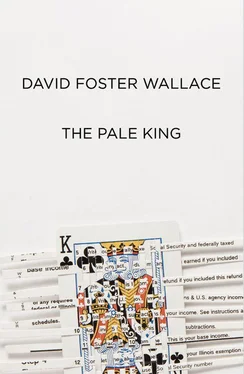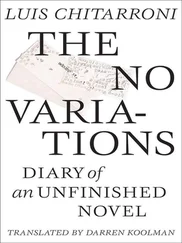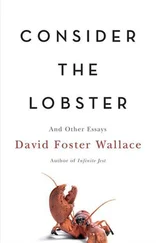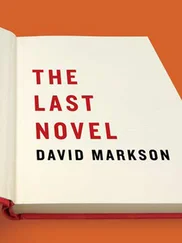David Wallace - The Pale King - An Unfinished Novel
Здесь есть возможность читать онлайн «David Wallace - The Pale King - An Unfinished Novel» весь текст электронной книги совершенно бесплатно (целиком полную версию без сокращений). В некоторых случаях можно слушать аудио, скачать через торрент в формате fb2 и присутствует краткое содержание. Год выпуска: 2011, Издательство: Little, Brown & Company, Жанр: Современная проза, на английском языке. Описание произведения, (предисловие) а так же отзывы посетителей доступны на портале библиотеки ЛибКат.
- Название:The Pale King: An Unfinished Novel
- Автор:
- Издательство:Little, Brown & Company
- Жанр:
- Год:2011
- ISBN:нет данных
- Рейтинг книги:3 / 5. Голосов: 1
-
Избранное:Добавить в избранное
- Отзывы:
-
Ваша оценка:
- 60
- 1
- 2
- 3
- 4
- 5
The Pale King: An Unfinished Novel: краткое содержание, описание и аннотация
Предлагаем к чтению аннотацию, описание, краткое содержание или предисловие (зависит от того, что написал сам автор книги «The Pale King: An Unfinished Novel»). Если вы не нашли необходимую информацию о книге — напишите в комментариях, мы постараемся отыскать её.
The Pale King
The Pale King: An Unfinished Novel — читать онлайн бесплатно полную книгу (весь текст) целиком
Ниже представлен текст книги, разбитый по страницам. Система сохранения места последней прочитанной страницы, позволяет с удобством читать онлайн бесплатно книгу «The Pale King: An Unfinished Novel», без необходимости каждый раз заново искать на чём Вы остановились. Поставьте закладку, и сможете в любой момент перейти на страницу, на которой закончили чтение.
Интервал:
Закладка:
David Foster Wallace
The Pale King: An Unfinished Novel
Editor’s Note
In 2006, ten years after the publication of David Foster Wallace’s Infinite Jest, Little, Brown made plans to release an anniversary edition of that glorious novel. Celebrations were set up at bookstores in New York and Los Angeles, but as the events neared, David demurred about attending. I telephoned to try to persuade him. “You know I’ll come if you insist,” he said. “But please don’t. I’m deep into something long, and it’s hard for me to get back into it when I’m pulled away.”
“Something long” and “a long thing” were the terms David used to talk about the novel he’d been writing in the years since Infinite Jest . He published many books in those years — story collections in 1999 and 2004 and gatherings of essays in 1997 and 2005. But the question of a new novel loomed, and David was uncomfortable speaking about it. Once when I pressed him, he described working on the new novel as like wrestling sheets of balsa wood in a high wind. From his literary agent, Bonnie Nadell, I heard occasional reports: David was taking accounting classes as research for the novel. It was set at an IRS tax return processing center. I had had the enormous honor of working with David as his editor on Infinite Jest , and had seen the worlds he’d conjured out of a tennis academy and a rehab center. If anyone could make taxes interesting, I figured, it was him.
At the time of David’s death, in September 2008, I had not seen a word of this novel except for a couple stories he had published in magazines, stories with no apparent connection to accountancy or taxation. In November, Bonnie Nadell joined Karen Green, David’s widow, to go through his office, a garage with one small window at their home in Claremont, California. On David’s desk Bonnie found a neat stack of manuscript, twelve chapters totaling nearly 250 pages. On the label of a disk containing those chapters he had written “For LB advance?” Bonnie had talked with David about pulling together a few chapters of his novel to send to Little, Brown in order to commence negotiations for a new contract and advance against royalties. Here was that partial manuscript, unsent.
Exploring David’s office, Bonnie and Karen found hundreds and hundreds of pages of his novel in progress, designated with the title “The Pale King.” Hard drives, file folders, three-ring binders, spiral-bound notebooks, and floppy disks contained printed chapters, sheaves of handwritten pages, notes, and more. I flew to California at their invitation and two days later returned home with a green duffel bag and two Trader Joe’s sacks heavy with manuscripts. A box full of books that David had used in his research followed by mail.
Reading this material in the months after returning, I found an astonishingly full novel, created with the superabundant originality and humor that were uniquely David’s. As I read these chapters I felt unexpected joy, because while inside this world that David had made I felt as if I were in his presence, and was able to forget awhile the awful fact of his death. Some pieces were neatly typed and revised through numerous versions. Others were drafts in David’s minuscule handwriting. Some — those chapters from the desk among them — had been recently polished. Others were much older and contained abandoned or superseded plotlines. There were notes and false starts, lists of names, plot ideas, instructions to himself. All these materials were gorgeously alive and charged with observations; reading them was the closest thing to seeing his amazing mind at play upon the world. One leather-bound workbook was still closed around a green felt marker with which David had recently written.
Nowhere in all these pages was there an outline or other indication of what order David intended for these chapters. There were a few broad notes about the novel’s trajectory, and draft chapters were often preceded or followed by David’s directions to himself about where a character came from or where he or she might be headed. But there was no list of scenes, no designated opening or closing point, nothing that could be called a set of directions or instructions for The Pale King . As I read and reread this mass of material, it nevertheless became clear that David had written deep into the novel, creating a vividly complex place — the IRS Regional Examination Center in Peoria, Illinois, in 1985—and a remarkable set of characters doing battle there against the hulking, terrorizing demons of ordinary life.
Karen Green and Bonnie Nadell asked me to assemble from these pages the best version of The Pale King that I could find. Doing so has been a challenge like none I’ve ever encountered. But having read these draft pages and notes, I wanted those who appreciate David’s work to be able to see what he had created — to be allowed to look once more inside that extraordinary mind. Although not by any measure a finished work, The Pale King seemed to me as deep and brave as anything David had written. Working on it was the best act of loving remembrance I was capable of.
In putting this book together I have followed internal clues from the chapters themselves and from David’s notes. It was not an easy task: even a chapter that appeared to be the novel’s obvious starting point is revealed in a footnote, and even more directly in an earlier version of that chapter, to be intended to arrive well after the novel begins. Another note in the same chapter refers to the novel as being full of “shifting POVs, structural fragmentation, willed incongruities.”
But many of the chapters revealed a central narrative that follows a fairly clear chronology. In this story line, several characters arrive at the Peoria Regional Examination Center on the same day in 1985. They go through orientation and begin working in and learning about the vast world of IRS tax returns processing. These chapters and these recurring characters have an evident sequence that forms the novel’s spine.
Other chapters are self-contained and not part of any chronology. Arranging these freestanding sections has been the most difficult part of editing The Pale King . It became apparent as I read that David planned for the novel to have a structure akin to that of Infinite Jest , with large portions of apparently unconnected information presented to the reader before a main story line begins to make sense. In several notes to himself, David referred to the novel as “tornadic” or having a “tornado feeling”—suggesting pieces of story coming at the reader in a high-speed swirl. Most of the non-chronological chapters have to do with daily life at the Regional Examination Center, with IRS practice and lore, and with ideas about boredom, repetition, and familiarity. Some are stories from various unusual and difficult childhoods, whose significance gradually becomes clear. My aim in sequencing these sections was to place them so that the information they contain arrives in time to support the chronological story line. In some cases placement is essential to the unfolding story; in others it is a matter of pace and mood, as in siting short comic chapters between long serious ones.
The novel’s central story does not have a clear ending, and the question inevitably arises: How unfinished is this novel? How much more might there have been? This is unknowable in the absence of a detailed outline projecting scenes and stories yet to be written. Some notes among David’s manuscript pages suggest that he did not intend for the novel to have a plot substantially beyond the chapters here. One note says the novel is “a series of setups for things to happen but nothing ever happens.” Another points out that there are three “high-end players… but we never see them, only their aides and advance men.” Still another suggests that throughout the novel “something big threatens to happen but doesn’t actually happen.” These lines could support a contention that the novel’s apparent incompleteness is in fact intentional. David ended his first novel in the middle of a line of dialogue and his second with large plot questions addressed only glancingly. One character in The Pale King describes a play he’s written in which a man sits at a desk, working silently, until the audience leaves, at which point the play’s action begins. But, he continues, “I could never decide on the action, if there was any.” In the section titled “Notes and Asides” at the end of the book I have extracted some of David’s notes about characters and story. These notes and lines from the text suggest ideas about the novel’s direction and shape, but none strikes me as definitive. I believe that David was still exploring the world he had made and had not yet given it a final form.
Читать дальшеИнтервал:
Закладка:
Похожие книги на «The Pale King: An Unfinished Novel»
Представляем Вашему вниманию похожие книги на «The Pale King: An Unfinished Novel» списком для выбора. Мы отобрали схожую по названию и смыслу литературу в надежде предоставить читателям больше вариантов отыскать новые, интересные, ещё непрочитанные произведения.
Обсуждение, отзывы о книге «The Pale King: An Unfinished Novel» и просто собственные мнения читателей. Оставьте ваши комментарии, напишите, что Вы думаете о произведении, его смысле или главных героях. Укажите что конкретно понравилось, а что нет, и почему Вы так считаете.












